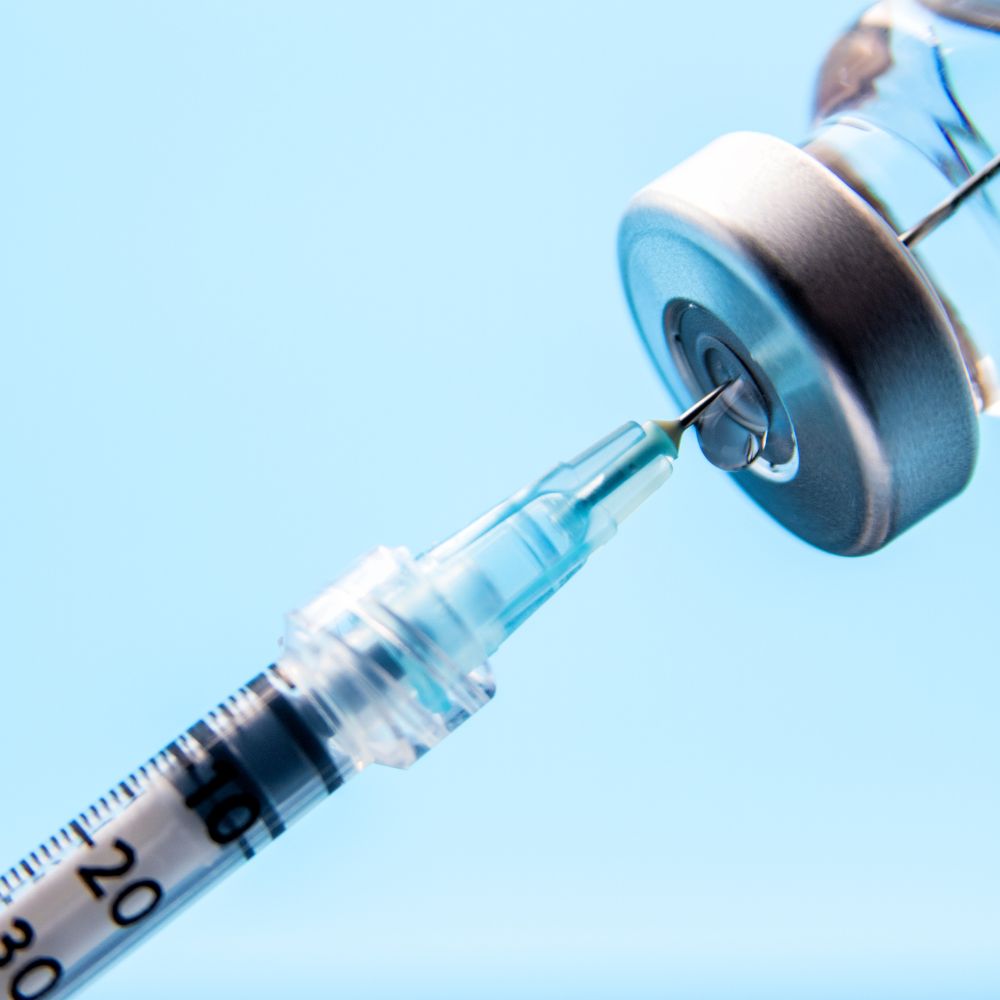Your basket is currently empty!
Vaccine Shows Promise in Early Trial

Kidney Cancer Vaccine Shows Promise in Early Trial
The vaccine generated robust immune response in nine patients with advanced disease
- All patients remained cancer-free for an average of 3 years.
- The findings remain to be replicated in larger studies.
- In a small clinical trial of nine patients with stage III and IV kidney cancer, a personalized anti-tumor vaccine generated robust immune response, according to findings of a new study led by HMS researchers at Dana-Farber Cancer Institute.
- The patients had a form of kidney cancer called clear cell renal cell carcinoma and were deemed at high risk for recurrence due to the advanced stage of the disease.
The research, funded in part by the National Institutes of Health and U.S. Department of Defense, is published Feb. 5 in Nature.
The nine patients, two of whom had metastatic disease and seven of whom had advanced, high-grade disease, were part of a phase 1 clinical trial. Such early-stage trials are designed to determine the safety and optimal dosage of a treatment and to establish whether and how well patients respond to the therapy before further testing in more people.
Promotion for Surgical Leadership Program’s One Year Certificate from Harvard Medical School, learn more
While the results remain to be replicated in larger studies, the researchers caution, these early findings raise hope that an anti-tumor vaccine is feasible for treatment of patients with kidney cancer at high risk of recurrence.
“We’re very excited about these results, which show such a positive response in all nine patients with kidney cancer,” says co-senior author and co-principal investigator Toni Choueiri, the HMS Jerome and Nancy Kohlberg Chair and Professor of Medicine and director of the Lank Center for Genitourinary Cancer at Dana-Farber.
The vaccines, designed to train the body’s immune system to recognize and destroy cancer, were administered after surgery to eliminate any remaining tumor cells. At the time researchers paused data collection, all nine patients had remained cancer free for a median of 40 months after surgery.
“This study was the result of a close partnership between our NeoVax team, our colleagues at the Broad Institute of MIT and Harvard, and our colleagues at the Lank Center for Genitourinary Cancer at Dana-Farber,” said co-senior author Catherine Wu, HMS professor of medicine and chief of the Division of Stem Cell Transplantation and Cellular Therapies at Dana-Farber and an institute member at the Broad, who developed the NeoVax vaccine technology used to create the personalized cancer vaccines for this trial. “We are thrilled to report these results.”
Clear cell renal cell carcinoma is the most common form of kidney cancer. Standard treatment for patients with stage III and IV of the disease is surgery to remove the tumor. Surgery can be followed by immunotherapy with a drug called pembrolizumab, an immune checkpoint inhibitor. Pembrolizumab induces an immune response that reduces the risk of the cancer relapse. However, about two-thirds of patients can still experience cancer recurrence that leaves them with limited treatment options.
“Patients with stage III or IV kidney cancer are at high risk of recurrence,” says Choueiri. “The tools we have to lower that risk are not perfect and we are relentlessly looking for more.”
In the current study, the researchers treated all nine patients with the personalized cancer vaccine after surgery. Five of them also received the drug ipilimumab, a form of cancer immunotherapy.
The vaccines were individualized to each patient using genetic material from their tumor as a way to teach the immune system to spot and destroy the cancerous cells. To do so, the scientists extracted tiny fragments of mutant proteins — called neoantigens — from each patient’s kidney tumor. These neoantigens are a tumor’s molecular signature — highly specific to the cancer and not found in any other cells in the body.
The team also used predictive algorithms to gauge which of the neoantigens were the most likely to induce an immune response. The vaccine was then made and administered to the patient in a series of initial doses followed by two boosters.
Read the full article on Harvard Medical School



